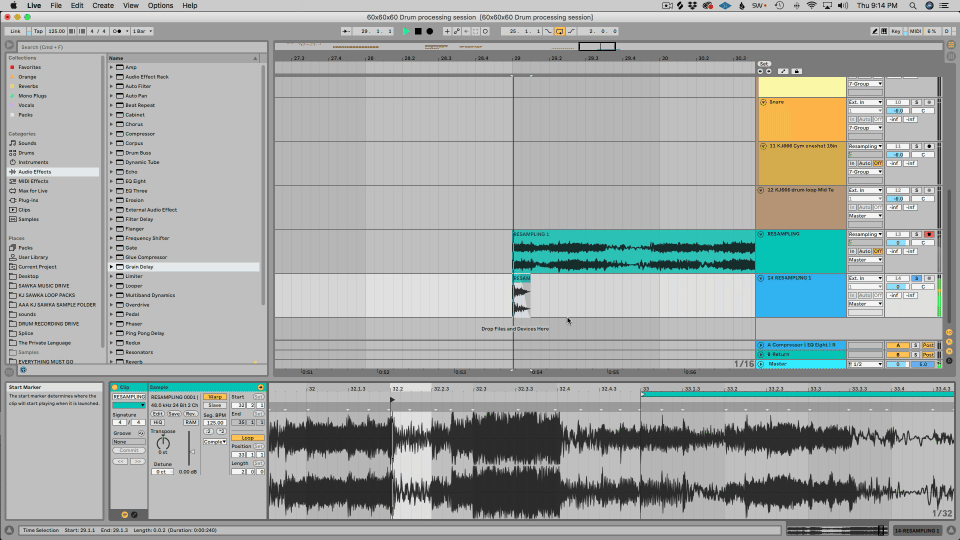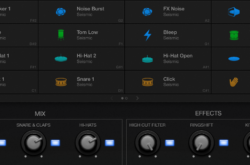Drums are one of the most important instruments in music.
They can dictate a track’s style, especially in dance music. As a drummer by trade, drums are important to me, but I’m also a producer so I see and hear both sides of the puzzle. On one end, drums are drums and they can often sound very similar across different tracks and producers. That said, in my opinion, it’s extremely valuable to have a signature drum sound that can set you apart from the rest. So, drawing on the sounds from my drum sample pack, “60x60x60,” here are some tips on how you can create a signature drum sound of your own.
1. Record your own sounds
You don’t need to have a professional drum kit or studio to get good sounds. You can record using a field mic, a GoPro, or even your phone – just try to use a microphone that can capture the majority of the 20 – 20 kHz frequency spectrum. If you’re looking for affordability, the Audio Technica AT2022 and the AKG P170 (which is under $100!) are good places to start – I’m not saying they’re the best microphones, but they’ll do the job just fine. As much as possible, try to get clean recordings with minimal outside noise.
You don’t have to just record drums, either. Try hitting cardboard boxes and pieces of paper. Try slapping the wall and the floor. Try clunking pieces of metal or crushing cans. The key is to capture 3 main elements: the fundamental (thud), the body (tone), and the top end (click). The more you record your own material, the more you’re going to have a unique drum sound.
2. Use loops and one-shots in creative ways
There are countless ways you can manipulate your existing drums to add your own spin to them. For example, with some simple cutting and processing, you can turn any full drum loop into a cool hi hat groove to add to your own kick and snare patterns:
You can also change up your kick and snare samples to your liking with some basic EQ, compression, and processing:
Easily make risers with cymbals and other long one-shots to boost the energy of your track:
Need more flexibility? Pull apart any loop and extract the individual kicks, snares, and hi hats to create your own beat at any tempo:
You don’t have to restrict yourself to using a loop as-is – try creating a gated groove or add room sound with some bus compression and reverb:
3. Have fun with sound design
Go crazy with re-amping, resampling, and mangling to achieve some new and unique sounds. For example, try putting a compressor, reverb, delay, and distortion on a beat:
Start resampling the beat while twisting all the knobs for ten minutes or so. Now, listen to what you did and start scrolling through the chunk and grab short hits out of it. Reverse them and resample again and again. Turn kicks into hats and cymbals into snares.

Experiment with drum machines and synths – bounce out kicks and snares at multiple pitches. Once you create a great drum patch you like, pitch it up and down and bounce each sound out into your own custom drum folder.

Having your own signature drum sound is important because it can create an immediate style and a sense of connectivity within your songs. It can set up a sonic identity and create imagination for the listener. If you’re not getting your desired sound or hitting the genre correctly, it’s probably the drums. At the end of the day, even if you’re just trying to make catchy songs with the classic I – V – vi – IV chord progressions, dive a bit deeper into the drum programming and sample digging and you’ll find that your songs will have more substance and will stand on their own more than ever before.
Do you have any tips or tricks for getting your own signature drum sound? Let us know in the comments below.
June 5, 2019


